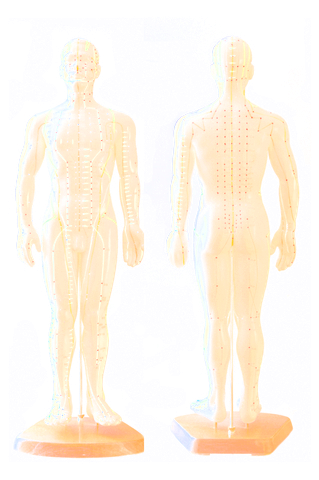Acupuncture and Traditional Chinese Medicine
In TCM (Traditional Chinese Medicine), illness is believed to be caused by an invasion of external factors and/or from emotional disharmonies within. External factors may eventually penetrate to the interior of the body and cause serious illness, just as internal factors move to the exterior and cause problems at the surface of the body and in the subject's behavior. Thus similar symptoms may have different causes.
The science of acupuncture is an important part of traditional Chinese medicine. For thousands of years the Chinese people have benefited from its wide range of curative properties and nonpharmaceutical method.
Susan assesses each client’s needs based on Tradition Chinese Medicine techniques including tongue and pulse diagnosis.
Acupuncture is an effective way of treating many types of ailments.
Some of the most common conditions treated are:
- Back Pain
- Frozen Shoulder or Shoulder Pain
- Headaches
- Vertigo
- Tennis Elbow
- Neck Pain
- Carpal Tunnel
- PMS
- Infertility
- Fibromyalgia
- Depression
- Tinnitus
- Sleep Disorders
- Stress
- Neuropathy
- Digestive Disorders
Treatments
A typical course of treatment consists of the initial assessment, which takes approximately one hour, followed by three more treatments, ideally within 2 weeks. Each individual will have a unique response depending upon their physical and emotional condition. After the third treatment clients should begin to notice an improvement in their condition
Regular treatments, monthly or seasonal maintenance sessions, are recommended to prolong the effects of the acupuncture and maintain balance.
Some of the TCM (Traditional Chinese Medicine) treatment methods include
Acupuncture
Acupuncture uses the specific character of each point, and precise pathway of each meridian to decide where a needle needs to be inserted in order to restore the proper flow of qi (energy) in the body. When this is achieved, an immediate increase in wellness is often experienced, with subsequent treatments building and adding upon each other.
Acupuncture needles are extremely thin, sterile, and are not reused. Unlike hypodermic needles, acupuncture needles are solid and hair-thin. In most areas of the body, they are inserted no more than ½ inch. There may be a small amount of discomfort at the initial insertion, but this quickly fades and gives way to the unique sensations of relaxation that typically occur with acupuncture.
Moxibustion
Moxibustion, a method of applying heat to specific acupuncture points,
Cupping
Cupping, a method which creates a warm vacuum inside a cup to gently pull on meridian lines and points.
Shiatsu
Shiatsu means “finger pressure” consisting of finger and palm pressure, stretches, and other massage techniques. Shiatsu is a way to help people relax and cope with issues such as stress, muscle pain, nausea, anxiety, and depression. (TCM) Shiatsu is traditionally performed on a futon mat, with clients fully clothed.
Facial Rejuvenation
Acupuncture supports your overall health with a focus on revitalizing the face.
Stimulating the circulation of blood flow and collagen production, as well as increasing facial muscle and skin tone maximizes the beautifying effect.
Acupuncture offers a safer, holistic alternative to botox or surgery.
The benefits of Facial Rejuvenation Acupuncture may include:
- Improved muscle tone and dermal contraction
- Increased collagen production
- Reduction of bags under the eyes
- Reduction of sagging and jowls
- Decreased puffiness around the face
- Elimination of fine lines on the face
- Reduction of larger wrinkles
- Hormonal balancing for hormonal acne or dry skin
- Moistening of the skin through increased circulation to the face
- Improvement of facial color through increased circulation
- Tightening of the pores
- Lifting of drooping eyelids
- Reduction of age spots
- Reduction of stress evident in the face
- Emergence of one's innate beauty and radiance
Susan has been a resident of York Region since 1984. Susan studied Acupuncture at The College of Traditional Chinese Medicine & Pharmacology Canada, and at The Institute of Traditional Medicine.
Susan received her certification as an Acupuncturist in 2007 from the Ontario Acupuncture Examination Committee. She is a member of the Canadian Association of Acupuncture and Traditional Chinese Medicine. Registered Acupuncturist with the College of Traditional Chinese Medicine Practitioners & Acupuncturist of Ontario R.Ac.#2963